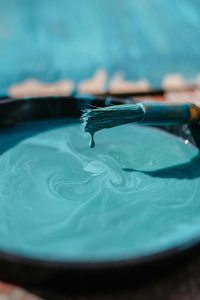-
Plaster Repair: 10 Essential Tips for Flawless Results
-
-
What is the best way to fix small holes and cracks in plaster walls?
-
Can I use joint compound for repairing larger areas of damaged plaster?
-
Should I wash the walls after sanding them during the repair process?
-
Is there anything specific I should consider when cleaning up after completing plaster repairs?
Cracked or damaged plaster can be a real eyesore, but fear not! We’ve got the ultimate guide to help you tackle this issue head-on. From essential tools and materials to step-by-step techniques, we’ve got you covered.
In this listicle, we’ll walk you through everything from preparing the surface and applying the right compound to sanding and finishing touches. Whether you’re a seasoned DIY enthusiast or a complete beginner, these tips will set you on the path to flawless plaster repair in no time.
So, if you’re ready to bid farewell to those unsightly cracks and blemishes on your walls, scroll down for reviews of our top picks—your key to achieving professional-quality results without breaking a sweat.
1. Gather Materials and Tools
When embarking on a plaster repair DIY project, it’s crucial to have the right materials and tools at your disposal. Here’s what you’ll need:
-
Materials: Plaster of Paris or premixed joint compound, sandpaper (medium and fine grit), drop cloths, paint primer, paint.
-
Essential tools: Putty knife, mixing container for the plaster mixture, drill with a mixing attachment for larger areas.
-
Safety gear: Dust mask to protect against inhaling dust particles from sanding.
For efficient work and quality results:
-
Consider renting specialized tools if needed: For extensive repairs or large areas, consider renting a drywall sander or power mixer to streamline the process.
2. Prepare the Space
When tackling plaster repair, preparing the space is crucial for a smooth and efficient process. Here’s how to do it:
-
Clear the work area of furniture and decorations to provide ample room for maneuvering and working comfortably.
-
Lay down protective coverings for floors and furniture to safeguard them against dust, debris, or accidental spills during the repair process.
-
Ensure proper ventilation in the workspace by opening windows or using fans. This helps in dissipating any fumes from materials used in the repair while also promoting a healthier environment for those involved in the project.
3. Test for Lead
When dealing with plaster repair, it’s crucial to use a lead testing kit to check for the presence of lead. This is especially important in older homes where lead-based paint may have been used.

Follow safety guidelines when conducting the test, such as wearing gloves and a mask to avoid direct contact with any potential lead particles. It’s essential to ensure that the testing area is well-ventilated during this process.
If the test reveals the presence of lead, it’s highly recommended to seek professional assistance. Dealing with lead requires specialized knowledge and equipment to ensure safe removal and disposal. Professional contractors can provide guidance on how best to proceed and can safely handle any necessary remediation.
Testing for lead is not only about repairing plaster but also about ensuring a safe environment for you and your family. By taking these precautions, you can protect yourself from potential health hazards associated with exposure to lead.
4. Inspect Plaster Walls for Damage
When inspecting plaster walls for damage, keep an eye out for cracks, holes, or bulges as these are common signs of deterioration in the plaster. These issues can be caused by various factors such as settling of the building, temperature fluctuations, or moisture exposure.
Moreover, it’s crucial to check for signs of water damage or mold on the plaster walls. Water stains and discoloration can indicate leaks or excessive moisture that may compromise the integrity of the plaster. Mold growth not only affects the aesthetics but also poses health risks.
Assessing the overall condition of the walls is essential to determine whether there are widespread issues that require attention. Look for areas where the plaster seems loose or detached from the underlying structure. Pay attention to any uneven surfaces that could indicate underlying structural problems.
5. Fix Small Holes and Cracks
When repairing small holes and cracks in plaster, spackling compound is the go-to material. It’s easy to work with and provides a smooth finish when dry. After applying the compound, use a putty knife to smooth out the surface, ensuring it’s level with the surrounding area.
Allowing sufficient drying time is crucial before sanding down the repaired spots. This ensures that the spackling compound sets properly, preventing any unevenness or imperfections once sanded.
For corners and edges, consider using a flexible putty knife for better control and precision during application. This can help achieve seamless repairs on these more intricate areas.
In some cases, especially when dealing with hairline cracks or very small holes, using a fine-grit sandpaper may be enough to smoothen out the surface without needing additional compound application.
Remember that proper preparation of the damaged area is essential for achieving professional-looking results. Clear away any loose debris or dust from around the repair site before starting your patchwork.
6. Use Drywall and Joint Compound for Larger Repairs
When dealing with larger plaster repairs, it’s often necessary to cut out the damaged sections and replace them with drywall. This allows for a more stable and long-lasting repair compared to simply patching over the damaged area.
After replacing the damaged section with drywall, applying joint compound is crucial. The joint compound helps blend the repair seamlessly with the surrounding plaster, ensuring that there are no visible gaps or inconsistencies in texture.
Once the joint compound has been applied and dried, sanding the area is essential to achieve a smooth and seamless finish. This step ensures that the repaired section matches perfectly with the rest of the wall, creating a professional-looking result.
Using drywall and joint compound for larger plaster repairs provides structural integrity while also allowing for a flawless aesthetic outcome. It’s important to note that this method may require some skill and experience, so it could be beneficial to seek professional assistance for complex repairs.
7. Glue Loose Plaster Back in Place
To address loose plaster sections, injecting adhesive behind the affected areas is a practical solution. By doing so, the adhesive effectively secures the loose plaster to the lath, preventing further detachment.
Pressing firmly on the reattached plaster aids in ensuring a strong bond between the two surfaces. This step is crucial for enhancing the effectiveness of the repair and minimizing future issues with detachment.
Supporting the area until the adhesive sets is essential for allowing ample time for it to cure properly. This ensures that the repaired section remains securely in place once dried.
In instances where traditional methods like nailing or screwing are not viable options due to fragility or historic significance of a building, using adhesives becomes an indispensable technique for repairing loose plaster while maintaining structural integrity.
Utilizing this method not only restores stability but also helps preserve historical buildings and structures by avoiding invasive repairs that could potentially damage their original features.
8. Sand and Wash a Final Time
After using fine-grit sandpaper to smooth the repaired areas, it’s crucial to clean the walls thoroughly to eliminate any dust and debris. This step ensures a clean surface for the next phase of the repair process.
Once sanded, make sure that all surfaces are completely dry before applying primer. Moisture can interfere with the adhesion of primer and paint, leading to potential issues with durability and color consistency in the final finish.
9. Use a High-Quality Primer and Paint
To ensure a successful plaster repair, it’s crucial to start with a bonding primer that promotes paint adhesion. This step is especially important if the plaster has been repaired or patched recently as it helps the paint adhere securely to the surface.
When choosing paint for plaster surfaces, opt for high-quality options designed specifically for this purpose. Look for paints labeled as suitable for masonry or plaster to achieve the best results. These types of paints are formulated to withstand the unique characteristics of plaster, such as its porous nature and ability to absorb moisture.
Consider using a roller when applying primer and paint on plaster walls. A roller facilitates even coverage and ensures that the primer and paint penetrate into any crevices or imperfections in the surface, resulting in a smooth and uniform finish.
Using these high-quality products not only enhances the aesthetic appeal of your repaired plaster but also contributes to its durability over time. By investing in premium primer and paint, you can prolong the lifespan of your freshly repaired walls while maintaining their pristine appearance.
10. Clean Up the Right Way, Right Away
When working on plaster repair, it’s crucial to dispose of waste materials properly. This not only keeps your work area tidy but also prevents potential hazards. Consider separating and recycling any recyclable materials to reduce environmental impact.
Storing leftover supplies in airtight containers helps maintain their usability for future projects. It also prevents unnecessary wastage and saves money in the long run by preserving the quality of the materials.
Cleaning tools and equipment immediately after use is a practice that can significantly extend their lifespan. For instance, cleaning brushes thoroughly after each use ensures they remain in good condition for years, saving you from frequent replacements and additional expenses.
Final Remarks
You’ve now learned the ins and outs of plaster repair, from gathering materials to giving your walls a fresh coat of paint. Remember, taking the time to properly prepare and execute each step will ensure a professional-looking finish. Don’t rush the process – patience is key. Now that you’ve got the knowledge, it’s time to roll up your sleeves and give your walls some much-needed TLC. Your home will thank you for it!
So go on, grab those tools and get ready to transform your space. With these tips under your belt, you’re well-equipped to tackle any plaster repair job that comes your way. Happy repairing!
Frequently Asked Questions
How do I know if my plaster walls contain lead?
If your house was built before 1978, it’s essential to test for lead before any repair work. You can use a DIY lead testing kit or hire a professional to conduct the test. It’s crucial to ensure safety when working with older materials.
What is the best way to fix small holes and cracks in plaster walls?
For small imperfections, use a high-quality spackling compound or patching plaster. Apply it carefully and smoothly, ensuring that it blends well with the surrounding surface. Sand lightly once dry for a seamless finish.
Can I use joint compound for repairing larger areas of damaged plaster?
Yes, joint compound works well for larger repairs on plaster walls. Use fiberglass mesh tape over large cracks before applying the joint compound for added strength and durability. Ensure proper drying time and sanding between coats for a smooth result.
Should I wash the walls after sanding them during the repair process?
Absolutely! After sanding, wipe down the walls thoroughly with a damp cloth to remove dust and debris. This step ensures that your primer and paint adhere properly, resulting in a professional-looking finish.
Is there anything specific I need to consider when mixing plaster for repairs?
Be diligent about cleaning up debris immediately after finishing your project. Dispose of all waste responsibly, as some old materials may contain hazardous substances like lead or asbestos. Keep pets and children away from the workspace until cleanup is complete.

